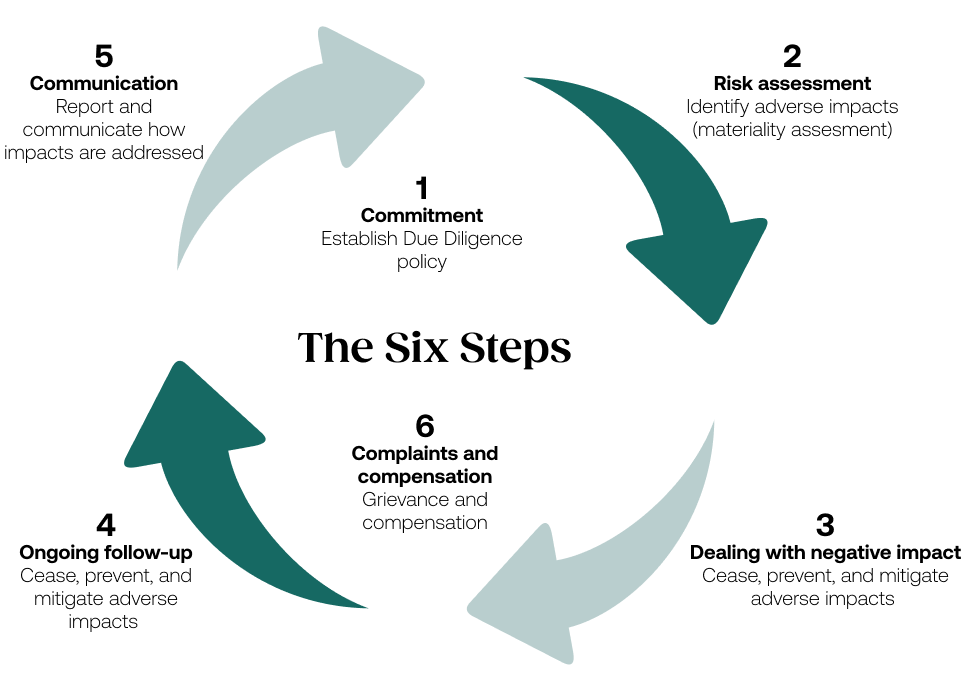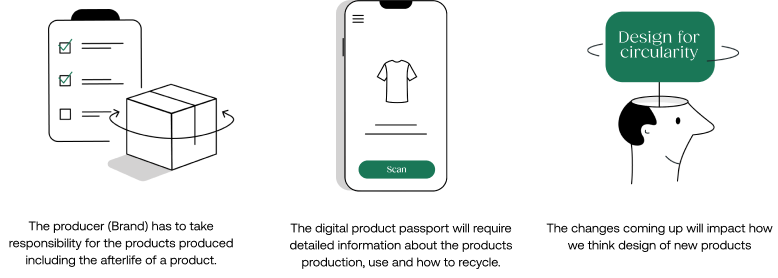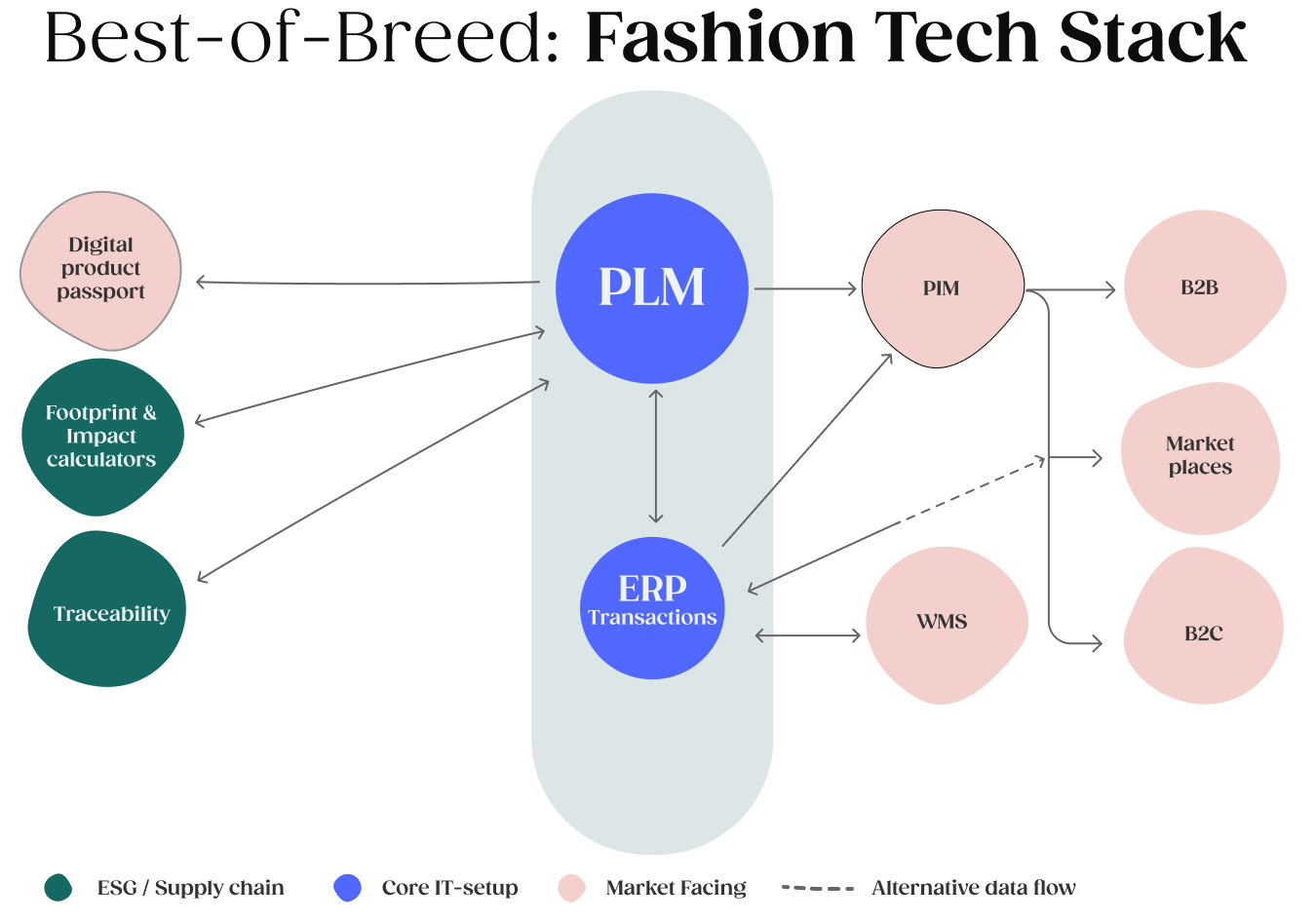
By Delogue
11 minute read
Delogue By Delogue
11 minute read
The term ‘sustainability’ has been interpreted, deconstructed, and bent in multiple shapes and forms to suit different purposes in the fashion industry. Being sustainable has come to encompass everything from branding plastic boots as vegan to boycotting Black Friday. But what does it mean to be sustainable? And is it even possible to be sustainable in an industry such as fashion?
Recognizing the need for urgent action in addressing the pressing environmental concerns of the textile industry, the European Union recently unveiled a comprehensive sustainable and circular textile strategy. This ambitious initiative aims to significantly reduce the environmental footprint of textiles by transforming the current production and consumption paradigms. The strategy encompasses innovative legislation and policies designed to promote eco-friendly production methods, encourage sustainable consumer habits, and extend the lifespan of clothing items. By doing so, it seeks to mitigate the widespread issues of overproduction and excessive consumption in the fashion sector, thereby contributing to a more sustainable and eco-conscious future.
In the following, we will dive into the new EU textile legislation and discuss how the fashion industry can comply with the different actions and what stakeholders must do to prepare. The new legislation consists of multiple directives and regulations with different steps and phases that will be introduced gradually, which means that the fashion industry needs to begin its preparations today.
The realities of the fashion industry’s environmental impact
In 1987, the United Nations defined sustainability as “development that meets the needs of the present without compromising the ability of future generations to meet their own needs.” Even with a complete turnaround of the fashion industry, it is evident that the production, distribution, consumption, and disposal of textile items will continue to impact the ability of future generations to meet their own needs. We have already experienced the early consequences of climate change with increasing incidents of wildfires and floods, and we cannot revert these natural disasters to protect future generations. However, the fact that the industry may not be sustainable is not an excuse for it not acting more sustainably. In other words: Just because you can’t fully succeed, doesn’t mean you shouldn’t try.
Being sustainable vs. acting sustainably
In EU countries, the consumption of textiles has the fourth-highest impact on the environment and climate change. Next, after food production, housing, and transportation, our clothes and other textiles harm this planet more than anything else. And it isn’t surprising when we look at the hard facts presented by the EU:.png?width=672&height=217&name=Group%208%20(2).png)
These facts alone cement the tremendous potential for the fashion and textile industry to lower its environmental impact and act more sustainably. The prevalent throwaway culture has shown its consequences, and the EU’s new legislation now aims to make fast fashion a thing of the past by ensuring that all textile products are durable, repairable, and recyclable. In the following, we will dive into the subsets of the new EU textile legislation and discuss what will happen and when.
The future of fashion
The EU’s Strategy for Sustainable and Circular Textiles addresses the production and consumption of textiles. The strategy envisions that by 2030:
- All textile products on the EU market will be durable, repairable, and recyclable, meaning that they will be made primarily from recycled fibers, free of hazardous substances, and produced with respect for social rights and the environment.
- Fast fashion will be out of style, meaning consumers will benefit from high-quality, affordable textiles that last longer.
- Profitable reuse and repair services will be made widely available.
- The textile industry will be competitive, resilient, and innovative, meaning that manufacturers will take responsibility for their products and support recycling, minimal incineration, and landfilling through the entire value chain.
The strategy consists of a list of proposed actions, some of which have already been adopted. The initiative is multi-faceted, but what is clear is that to comply, the fashion industry needs to manage its data more effectively and rethink the linear production line.
The Danish Chamber of Commerce, one of Denmark's largest professional business organizations, has designed a complete overview of the proposals and the preliminary timelines for approval and implementation periods, illustrating the urgent need for action. Legislative details aside, the message is clear: Fashion brands aiming to sustain their presence in the EU beyond 2025 must initiate preparations immediately.
From proposal to implementation
Some of the legislative proposals are still in the early stages, which makes detailed descriptions of each article premature. However, in December 2023, the EU formally adopted the first three proposals that now await implementation. These are:
- Ecodesign for Sustainable Products Regulations (ESPR).
- Corporate Sustainability Due Diligence Directive (CSDD).
- Packaging and Packaging Waste Directive (PPWD).
These initiatives address several of the headlines from the strategy, and several of their required actions are intertwined. In the following, we will dive into these three specific proposals to see how they will impact the fashion industry.
Ecodesign for Sustainable Products Regulations (ESPR)
On December 5, 2023, the European Parliament and the European Council agreed to revise the existing ecodesign regulation for sustainable products to include textiles and other categories of goods. The regulations aim to improve various aspects of products throughout their lifecycle and include:
- A Digital Product Passport containing accurate and up-to-date information, enabling consumers to make informed purchasing choices.
- A public web portal that will subsequently allow consumers to search and compare information included in the product passports.
- Annual reporting on the quantities of destroyed unsold products and the reason behind the destruction.
- A specific ban on destroying unsold apparel, clothing accessories, and footwear – the Commission reserves the right to expand the list of categories in the future.
- Addressing concerns related to the premature deterioration of products.
The Digital Product Passport is expected to take the form of a QR code or similar introduced on all items. The passport will likely be required to document the product's entire life cycle, and the environmental impact and map the supply chain. It must be implemented by 2026 for brands to continue selling their items in the EU.
Corporate Sustainability Due Diligence Directive (CSDDD)
On December 14, 2023, the European Parliament and the European Council reached a provisional agreement on the Corporate Sustainability Due Diligence Directive (CSDDD). This directive aims to enhance the protection of the environment and human rights within the EU and globally.
The CSDDD applies to:
- EU companies with more than 500 employees and a global turnover exceeding €150 million.
- Non-EU companies generating €150 million or more in the EU market.
- EU companies with over 250 employees and a global turnover of €40 million or more, with half of this turnover generated in high-risk sectors.
- Non-EU companies with €40 million or more generated in the EU market, with 50% of this turnover in high-risk sectors.
The directive aligns with the Corporate Sustainability Reporting Directive (CSRD), effective from 2025 for some companies. Companies within the scope of CSRD must follow its reporting obligations to detail their due diligence policies and processes.
The requirements are meant to take on a trickle-down effect through the supply chain and will thus also affect smaller companies. Even though the rules only apply to larger companies, initially, smaller brands must also report on their due diligence if they want to sell their goods to the larger companies responsible for the entire supply chain.
Regulation on packaging and packaging waste (PPWD)
On December 18, 2023, the European Council agreed on a general approach to packaging and packaging waste in the EU. The approach serves as a mandate for negotiations with the European Parliament on the legislation that will tackle the increasing packaging waste generated in the EU.
The proposal considers the entire packaging life cycle and ensures that all packaging is safe, sustainable, and recyclable. The amount of substances of concern in packaging must be minimized, while labeling requirements will improve consumer information. Moreover, the proposal aims to minimize packaging by implementing reuse targets and restricting certain types of single-use packaging. As much packaging as possible must be collected, sorted, and recycled after disposal, and extended producer responsibility will be introduced.
Navigating the changes towards a more sustainable fashion industry: 5 crucial steps for your brand’s survival
The new and updated EU legislation might seem confusing and overwhelming. However, we have attempted to sum up how it will affect the textile and fashion industry and describe the steps you must follow to prepare for the legislation and continue selling clothes in the EU after 2025.
Sustainability is not a foreign concept to the fashion industry, and many front-runners have attempted to reduce the industry’s environmental impact. Multiple sustainability trends surface every year, hoping to become the next groundbreaking idea that will save our planet’s resources. However, these trends are often short-lived and have had limited effect.
1. Take responsibility
The EU legislation dictates that fashion brands must take full responsibility for every style they create. With the Digital Product Passport, the EU aims to hold producers accountable for all the products they place on the market. Moving towards a circular economy, brands must be prepared to report on their product's life cycle and environmental impact and map the supply chain from design to store.

As it takes about a year to fully prepare a new fashion collection, including production and delivery times, brands must be ready to track, organize, and gain a complete overview of their data when they start working on the new collection in 2025. The Digital Product Passport will require detailed information about every component and method of production and demand that you have a clear overview of all the data surrounding each of your products.
To be compliant, fashion companies must begin to collect and organize all data connected to their work, including detailed information and quantitative data about each material used in the style, such as:
- The origin of each material.
- The production line from raw materials to the manufacturing facility.
- Percentage and type of recycled content in materials.
- The environmental impact of each step and material: Carbon footprint, water usage, etc.
2. Ensure due diligence
Even though only larger fashion companies with more than 500 employees and a net turnover of 15 billion Euros will be directly affected by the CSDDD and required to report on their due diligence, smaller brands will be expected to follow to sell their products, e.g. to large retailers.
To effectively report on due diligence, brands need to:
- Assess their social and environmental impact throughout their supply chain continuously.
- Identify and document suppliers, sub-suppliers, and other parties involved in the production, ensuring accountability.
- Identify, assess, and mitigate the potential environmental impact and human rights violations associated with the brand's operations.

3. Rethink your designs: From linear to circular design processes
At its core, the EU legislation mandates that the fashion industry rethinks its approach to design and invents new design concepts. The new legislation aims to make lasting changes, which requires brands to shift towards durable, repairable, and recyclable products. Moreover, as the legislation requires transparency in supply chains, brands must consider the origin and production of their goods, potentially shortening supply chains and streamlining operations.
Fashion brands typically launch 4-12 collections annually, each requiring complex decision-making in the design processes. Transforming this process from a linear to a circular business model includes:
- Incorporating repairability into the design process by, for example, including extra buttons, thread, and zippers for repairs.
- Choosing recyclable mono materials composed of a single material or fiber. While mixing polyester with cotton might, in some instances, enhance the product's durability, mono materials are generally easier to recycle.
- Prioritizing durability by:
- Choosing long-lasting materials.
- Introducing fabric treatments that make the fabric last longer.
- Implementing robust stitching.
- Reducing yarn and stitch peeling.
- Ensuring recycling by:
- Informing the end-user on recycling options.
- Introducing a take-back model that enables customers to return items to the manufacturer.

4. Data collection
Collecting data and reporting on all product and supply chain information is a complex task that requires more comprehensive data management than standard spreadsheets allow. Effective data management necessitates investments in digital solutions that collect and validate specific product and supply chain data. This includes tools for calculating the environmental impact of each component necessary for the Digital Product Passport.
All data must be collected from the beginning of the design phase to incorporate all the critical considerations, including the composition of the material, its weight, its origin, and the manufacturing details of all components. The production process itself encompasses data surrounding the chemical use and the social and environmental impact of the production line.
The need for detailed insights into these elements stresses the significance of adopting digital solutions for data collection and validation, ensuring a comprehensive understanding of the product's lifecycle and place within the broader supply chain.
5. Data integration and streamlining
Data integration and streamlined processes are necessary to avoid inflicting additional reporting burdens on manufacturers and factories. The primary objective of the additional reporting is to effect real change rather than add administrative tasks, which is why it’s important to optimize your company's IT solutions to comply with the forthcoming regulations. Strategic investments in technology ensure that sustainability efforts become integrated into operations, aligning business objectives with environmental goals.
As illustrated below, the ideal tech stack for fashion brands consists of:
- Product Lifecycle Management (PLM): To map the entire product lifecycle, from design to disposal, integrating various aspects such as design process, sourcing, production, and end-of-life considerations.
- Enterprise Resource Planning (ERP): To manage core business processes, including inventory, order fulfillment, and financials, enhancing operational efficiency by streamlining workflows, optimizing resource allocation, and ensuring accurate financial reporting.
- Product Information Management (PIM): To facilitate the distribution of product data and media across sales channels.
With this paradigm shift, comprehensive data collection is more necessary than ever. The three IT solutions must be capable of receiving information about ESG-related matters, supply chain, and product information to comply with the future requirements for the Digital Product Passport.
As shown in the illustration below, the three solutions should also be equipped to deliver the necessary information to the various distribution channels.
What to do from here
The new EU legislation necessitates changes to the fashion industry, and with the tight implementation timeframe, brands need to start their preparations now. As an industry, it is important to come together, share knowledge, and collaborate on best practices and solutions. Brands must navigate the various steps to achieve a circular design process that aligns with the regulations and consumer expectations.
Circular designs involve repairability, durability, and recyclability, including using recycled materials and ensuring high fabric quality. In addition, providing a take-back solution will ensure that products can be repurposed. These combined efforts will indisputably make fast fashion out of fashion and, hopefully, support a new era of sustainable fashion.
Delogue PLM: One place for managing all product specifications
Delogue is a Product Lifecycle Management system that enables transparent collaboration for apparel and lifestyle brands across a global supply chain. Delogue helps its users produce consciously and reduce waste with validated product data.